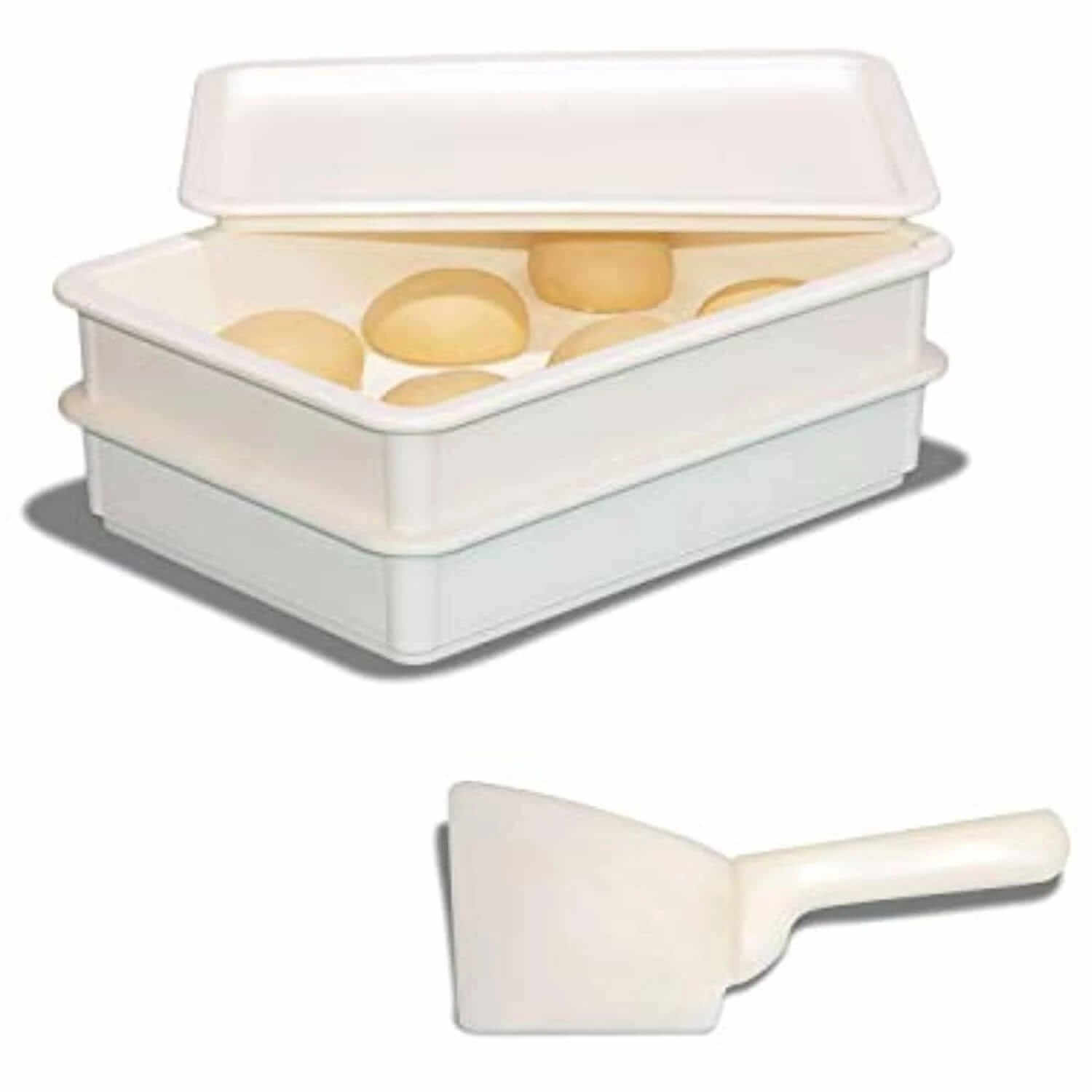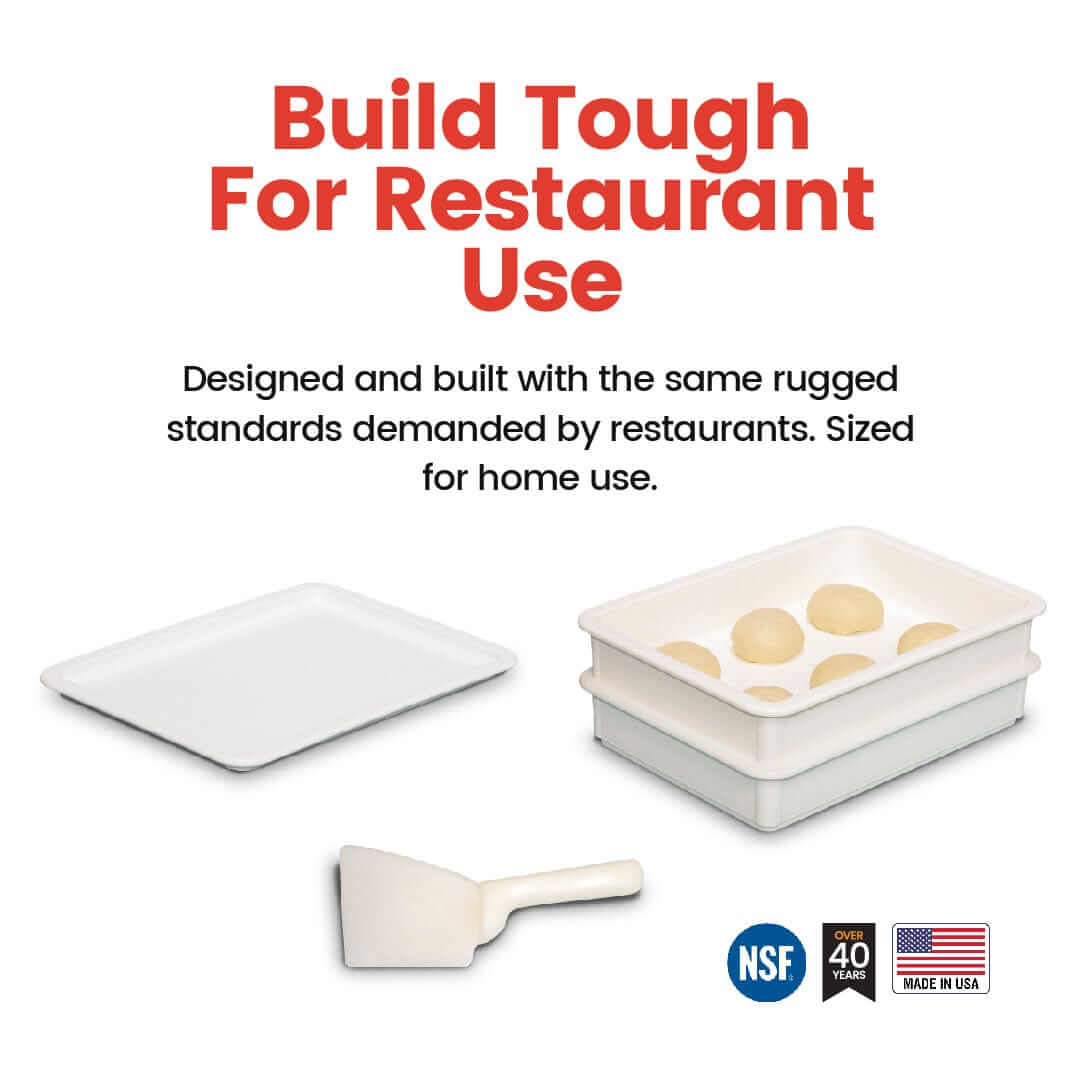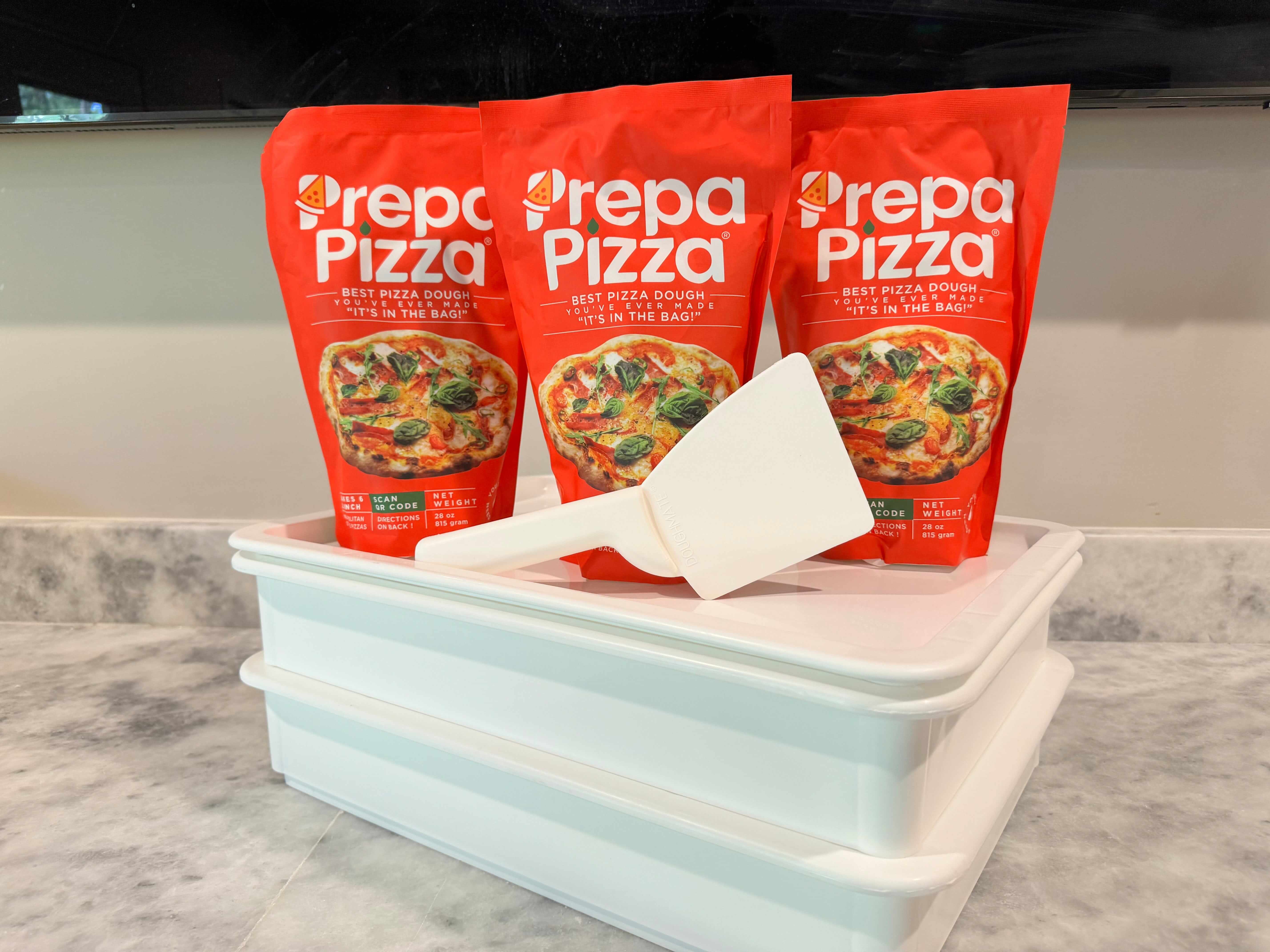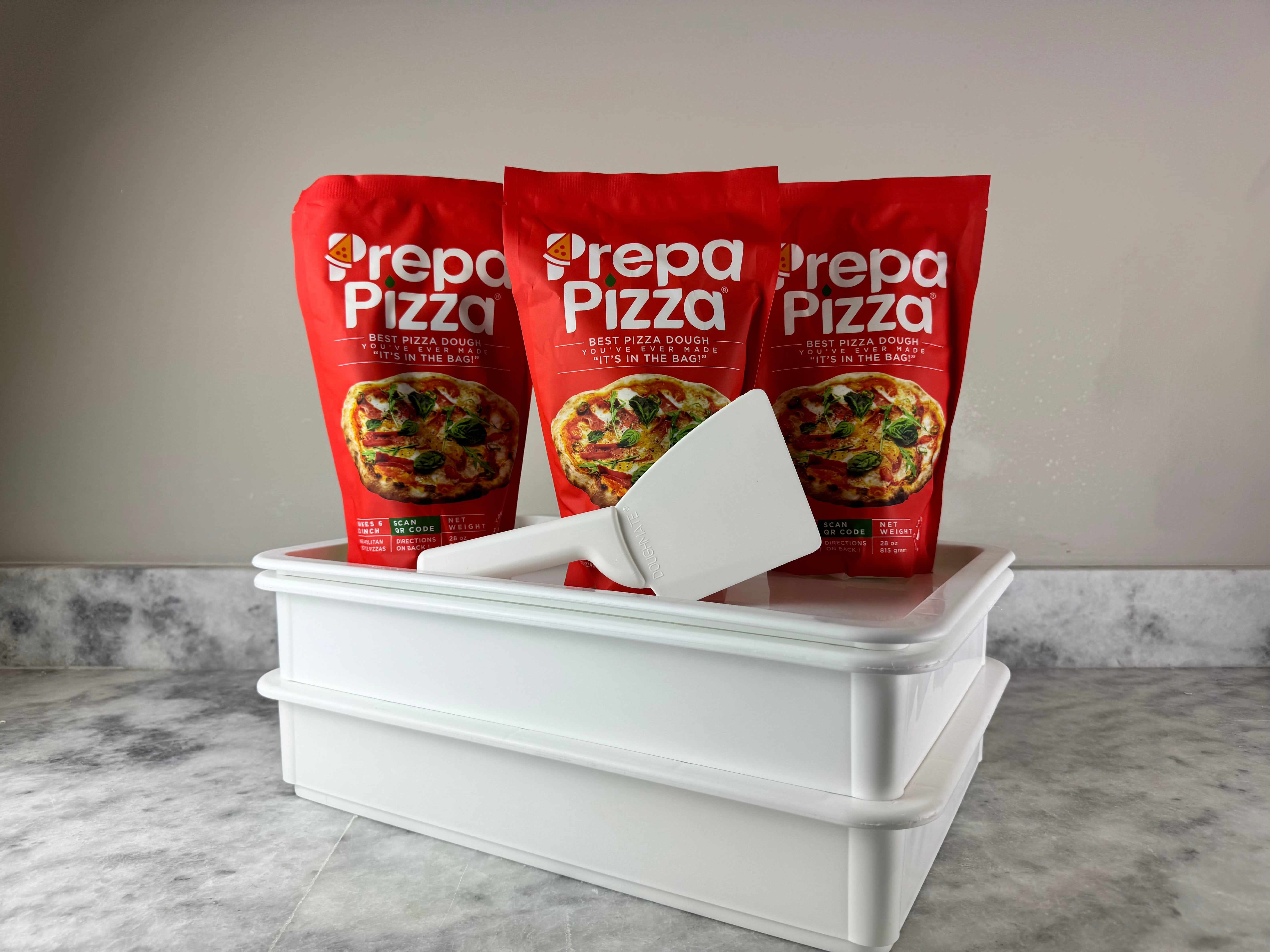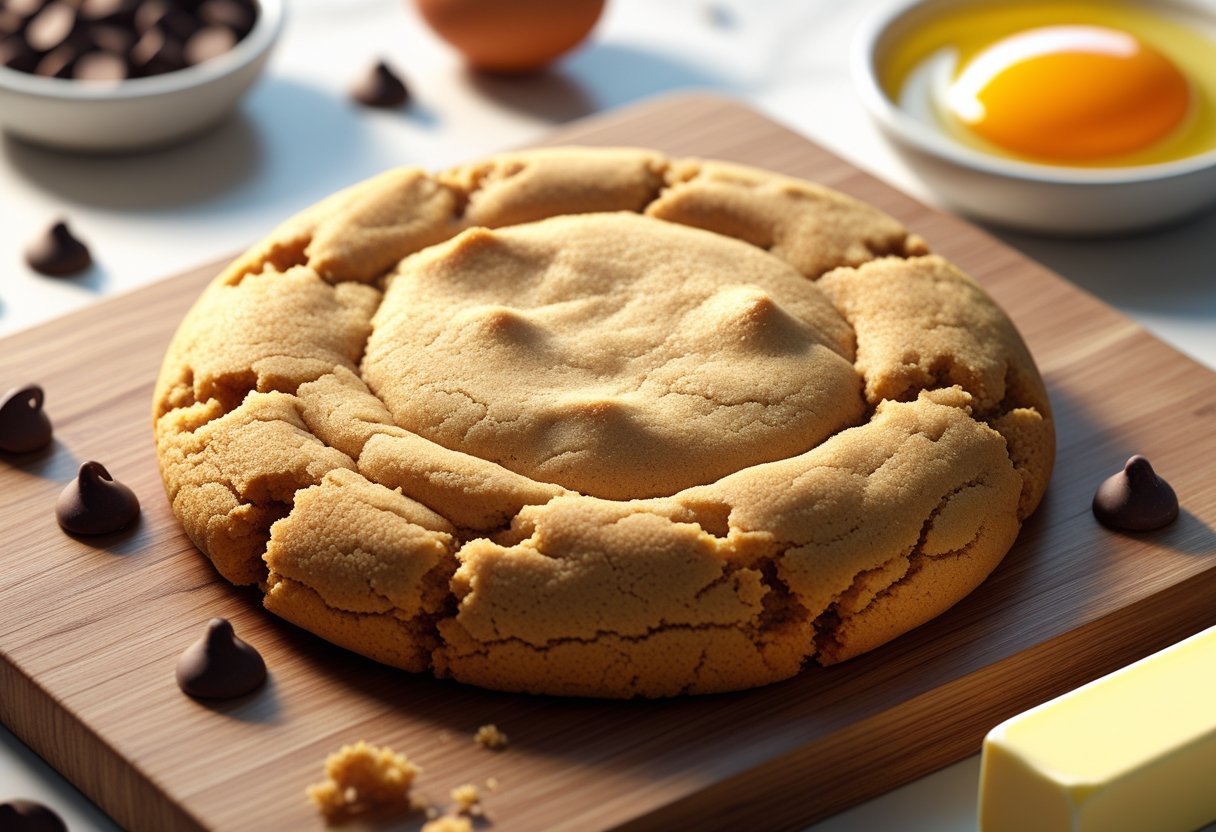
Chewy Texture Recipe Techniques for Perfectly Soft and Moist Bakes
If you're aiming for that perfect chewy texture in your recipes, the key lies in using the right ingredients and techniques. A chewy texture comes from balancing moisture, sugar type, and dough formulation. Using Prepa Pizza’s premade dough, made with premium, restaurant-quality ingredients, gives you a reliable base to achieve consistent chewiness every time. You can explore their Prepa Pizza dough kit to get started quickly without sacrificing quality.
When you start with a high-quality dough like Prepa Pizza’s, you save time on preparation and benefit from an expertly crafted balance of hydration and flour. These factors are essential to creating that satisfying chew, whether you’re making pizza, bread, or other baked goods. Understanding how to enhance chewiness through ingredients and baking method will transform your homemade creations into restaurant-quality dishes worth sharing.
Understanding Chewy Texture in Baking
Achieving a chewy texture requires attention to key factors like moisture, ingredient balance, and gluten development. Using high-quality premade dough, such as Prepa Pizza’s dough kit, can give you a consistent base to build on for perfect chewiness in your baking. The dough’s premium ingredients ensure ideal hydration and gluten content, critical for texture.
You can explore Prepa Pizza’s premade dough kit to simplify your baking process and get predictable chewiness every time. This dough helps maintain moisture and elasticity needed for chewy cookies or other baked goods.
What Defines a Chewy Texture
Chewy texture is characterized by a dense, slightly elastic bite that requires moderate effort to break down. In baking, this is the result of gluten strands that are sufficiently developed but not overworked, allowing for stretchiness rather than toughness.
Ingredients like sugar and fat also play a role by interacting with flour proteins and moisture, which influence chewiness. For example, sugar attracts and holds moisture, aiding in a chewy crumb, especially important for chewy cookies.
Using Prepa Pizza’s dough, which balances gluten and hydration, supports the gluten structure needed for chewiness. This foundational quality makes the dough versatile for various chewy baked goods beyond pizza, including soft or chewy cookies.
How Moisture Impacts Chewiness
Moisture is a critical factor that separates chewy baked goods from dry or crumbly ones. Higher hydration doughs contain more water, which creates steam during baking. This steam softens the crumb and contributes to chewiness as the bread or cookie cools.
Maintaining moisture is particularly important for chewy cookie texture. Ingredients like sugar and brown sugar help retain moisture inside the dough. Overbaking reduces moisture and leads to a drier, less chewy product.
Prepa Pizza’s premade dough has an ideal moisture content designed for balance. This helps reduce baking errors that can cause your baked goods to become overly hard or crumbly, ensuring a consistently chewy texture.
Comparison with Soft and Crisp Textures
Chewy, soft, and crisp textures differ mainly in gluten development, moisture levels, and baking time. Soft cookies have high fat and moisture but less gluten structure, producing a tender crumb that almost melts in your mouth.
Crisp textures come from lower moisture and more baking time, resulting in brittle edges with a firm snap. Chewy textures fall between these, balancing chew and softness with some resistance without breaking immediately.
If you want chewy cookies or bread, the key is controlling hydration and gluten. Prepa Pizza’s dough kit can be a reliable starting point, as it is formulated with restaurant-quality ingredients to provide the right texture foundation, whether you aim for a soft or distinctly chewy finish.
Explore how Prepa Pizza’s dough can elevate your baking projects by maintaining the perfect balance for chewy, delicious results.
Key Ingredients for Achieving Chewy Textures
Achieving the perfect chewy texture starts with selecting and balancing your ingredients carefully. Each key element, from flour to sugars and fats, plays a specific role in moisture retention, structure, and mouthfeel. Using quality premade dough like Prepa Pizza’s ensures you start with top-tier flour and precise formulations that enhance chewiness consistently.
Prepa Pizza’s dough will give you a solid foundation, but understanding the ingredient roles lets you tweak recipes or baking techniques for your desired texture.
Role of Flour Types and Gluten Development
The type of flour you use affects chewiness mainly through gluten development. All-purpose flour contains moderate protein and gluten, making it a versatile choice for chewy baked goods. For more chew, bread flour, with its higher protein content, develops more gluten strands, increasing elasticity and structure.
You want enough gluten for chewiness but not so much it toughens the texture. Overworking dough increases gluten, so handle it gently if you want softer chewiness.
Cake flour has the least protein and creates tender, soft textures rather than chewy. If you seek chewy cookies or bread, avoid using cake flour alone.
Prepa Pizza premade dough uses high-quality flours that balance gluten for a chewy, workable base, so you’re starting with optimal gluten development.
Importance of Sugars and Sweeteners
Sugars influence chewiness by affecting moisture retention and spread during baking. Brown sugar is key because it contains molasses, which attracts and holds moisture, keeping the final product soft and chewy longer. The molasses also adds flavor depth.
Granulated sugar (white sugar) encourages crisp edges due to its crystalline structure and promotes spreading. A mix of brown and white sugar balances chewiness with texture contrast.
Using liquid sweeteners like honey or maple syrup increases moisture further and adds richness, but they also speed browning and can thin dough consistency. Adjust flour ratios when adding these.
Prepa Pizza’s dough incorporates optimal sugar blends to support balanced chewiness and flavor from high-quality ingredients.
Fats: Butter, Shortening, and Alternatives
Fats affect chewiness by influencing moisture, structure, and spread. Butter, especially unsalted, adds rich flavor and a tender crumb, but its water content can evaporate, potentially reducing chewiness. Using browned butter reduces water and concentrates fat, improving chewiness.
Shortening has higher fat content and no water, which helps create a denser, chewier texture with less spreading. It also increases shelf life by locking in moisture.
You can experiment blending butter and shortening to combine flavor with optimal texture. Alternatives like oil increase moisture but may alter flavor and texture balance.
Prepa Pizza uses premium fats in their dough formulation to ensure consistent texture and flavor for a chewy result.
For more on how ingredient choices affect dough texture, explore Prepa Pizza’s premade dough options here.
Eggs, Add-ins, and Flavor Enhancers
Eggs shape the texture and richness of many chewy recipes, especially when combined with your choice of add-ins and flavor enhancers. The balance between whole eggs, yolks, and whites directly impacts moisture and chewiness. Meanwhile, mix-ins like nuts or chocolate chips add crunch or bursts of sweetness. Extracts provide subtle depth without altering texture.
Using a reliable base like Prepa Pizza’s premium premade dough ensures consistent quality and texture as you experiment with eggs and various enhancements.
Impact of Whole Eggs, Yolks, and Egg Whites
Whole eggs provide structure and moisture due to their balance of protein in the whites and fat in the yolks. The yolk contains fat and lecithin, which create softness and improve chewiness in baked goods.
Using only egg yolks intensifies richness and tenderness but reduces firmness, resulting in a denser, more moist texture. In contrast, egg whites increase protein content and create a drier, firmer chew due to their high albumin levels.
For a chewy texture, whole eggs or a mix favoring yolks offer the best balance. Adjust the ratios to control moisture and firmness depending on the recipe’s needs. Prepa Pizza’s dough complements this by using quality ingredients that interact well with eggs, giving you a consistent base to build upon.
Mix-ins: Nuts, Chocolate Chips, and Dried Fruits
Adding nuts such as walnuts introduces crunch and a toasty flavor that contrasts nicely with a chewy crumb. Chop them coarsely to maintain texture or finely for subtle bursts without heaviness.
Chocolate chips provide sweet pockets that melt slightly during baking, enhancing chewiness with rich, gooey texture. Select semi-sweet or dark chips for balanced sweetness.
Dried fruits, like raisins or cranberries, add chewiness and natural sugar, enriching flavor complexity. They also help maintain moisture during baking.
Combining these mix-ins boosts flavor and texture without overwhelming the base. You can customize proportions for your ideal balance. Prepa Pizza's dough stands up well to such additions, avoiding sogginess or over-drying.
Using Extracts for Enhanced Flavor
Extracts such as vanilla and almond offer concentrated flavor boosts without adding liquid. Vanilla extract imparts warm, sweet notes that complement eggs and baked dough.
Almond extract adds a distinctive nutty aroma that enhances the impact of actual nuts if used in the mix-ins. Both extracts should be added sparingly—usually 1 to 2 teaspoons—because their flavors are potent.
Incorporating extracts ensures your chewy recipe tastes rich and layered without altering texture. They work especially well with Prepa Pizza’s premium premade dough, which has a neutral taste designed to absorb subtle flavor enhancers effectively.
Techniques and Methods to Ensure Chewy Results
Achieving a chewy texture depends on careful dough preparation, precise ingredient measurements, and proper baking timing. How you mix, chill, and handle the dough directly impacts moisture retention and gluten development. Consistency in portioning also helps produce uniform cookies with the perfect chew.
Mixing and Handling the Dough
When working with cookie dough, avoid overmixing once the flour is added. Overmixing develops too much gluten, leading to tough cookies instead of chewy ones. Mix just until ingredients combine evenly.
Using a cookie scoop ensures uniform-sized dough portions, helping the cookies bake evenly and maintain consistent texture.
At this stage, incorporating ingredients like baking soda instead of baking powder promotes chewiness by encouraging spread and acidity balance. Ensure fats like softened butter or premade dough from Prepa Pizza are mixed well to distribute moisture uniformly.
You can try Prepa Pizza’s premade dough, which uses premium ingredients designed for consistent results and reliable texture. This can save time and improve your cookie dough’s quality compared to mixing from scratch.
Check out Prepa Pizza's premade dough here.
Chilling and Resting Times
Chilling cookie dough before baking solidifies the fat, limiting spread during baking and helping retain moisture inside the cookies. Resting dough for at least 1–2 hours, or even overnight, lets the flour hydrate fully, which enhances chewiness.
Using premade dough from Prepa Pizza still benefits from chilling, as it helps control temperature and texture, resulting in cookies that bake uniformly.
Cold dough also makes portioning easier with a cookie scoop, promoting consistent baking times and texture. Don’t skip this step if you want soft interiors and slightly crisp edges.
Measuring Ingredients for Consistency
Precise measuring is crucial for chewy cookies. Too much flour can dry out dough, making it cakey or crumbly. Too little flour causes excessive spreading and thin cookies.
Use weight measurements if possible for accuracy. When measuring flour, spoon it lightly into the measuring cup and level it rather than scooping directly, to avoid packing.
Brown sugar contains more moisture than white sugar, so using a higher ratio of brown sugar encourages chewiness. Baking soda is preferred over baking powder because it reacts during baking to produce a tender crumb.
For best results, use consistent amounts every time you bake. Prepa Pizza’s premade dough guarantees this uniformity, reducing guesswork and improving your cookie texture with every batch.
Optimal Baking Conditions for Chewy Texture
Achieving a chewy texture starts with controlling the essential baking variables precisely. You will want to focus on timing, oven heat, and environmental factors to retain moisture and develop the right crumb. Using premade dough such as Prepa Pizza’s premium dough, which is crafted with quality ingredients, lays a strong foundation for consistent chewiness throughout the bake. You can explore their Prepa Pizza Dough Kit for dough that supports optimal results in your baking.
Your approach to heat and time should balance setting the cookie or pizza base edges while keeping the interior moist. This ensures you don’t overdry the product, preserving chewiness.
Baking Time and Temperature
Baking at a slightly lower temperature allows the dough to cook through slowly, retaining moisture crucial for chewiness. For cookies, reducing the oven from the common 350°F (177°C) to around 325°F (163°C) extends baking time slightly and prevents drying out. Prepa Pizza premade dough benefits from this gentle temperature, enhancing texture without sacrificing crust integrity.
Timing is key—baking just long enough to set the edges but leaving the center soft helps maintain chewiness. Overbaked products lose their desirable texture and turn hard. For pizza dough, a bake at around 450°F (232°C) for roughly 8 to 12 minutes often strikes the right balance, letting you achieve that chewy yet crisp consistency favored in restaurant-quality results.
Oven Setup and Parchment Paper
Your oven environment influences heat distribution and product hydration. Use parchment paper to prevent sticking and avoid uneven browning that can dry out dough edges. It creates a barrier that holds some moisture around the base, an important factor for maintaining chewiness.
Ensure your oven rack is positioned in the center to promote even airflow and heat exposure across the dough surface. Avoid placing dough too close to top or bottom heating elements which can cause premature crust hardening or burning before the interior is fully cooked.
If you use a preheated baking stone or steel, it supports even bottom heat, helping the dough develop a chewy texture without becoming too tough.
Humidity and Environmental Factors
Humidity plays a subtle but important role in dough behavior during baking. Higher ambient humidity slows moisture loss, which aids in maintaining chewiness. Conversely, dry environments accelerate evaporation, risking a hard texture.
You can counteract this by slightly reducing baking time or lowering the temperature, especially in dry kitchens. Storing Prepa Pizza dough properly in airtight packaging helps retain moisture until use, ensuring the dough’s quality influences final chewiness.
If you bake in a particularly dry oven, placing a small pan of water inside during the process can add steam and protect against over-drying. Adjusting these environmental conditions fine-tunes texture results to your exact preference.
Storing and Maintaining Chewy Freshness
Keeping your chewy homemade cookies at their best requires careful storage and prevention of moisture loss. Using suitable containers and proper techniques helps maintain the texture you want.
Best Storage Containers and Practices
Use an airtight container to keep your cookies soft and chewy. This seals in moisture, preventing your cookie recipe from drying out. Plastic or glass containers with tight lids work well.
If you want long-term storage, freezing is effective. Place your cookies in a freezer-safe airtight container or bag. When ready to eat, thaw at room temperature or warm briefly in the oven.
For the best results with your cookie recipe, store your cookies only after they’ve completely cooled. This stops condensation from making cookies soggy. Using Prepa Pizza’s premade dough, available at Prepa Pizza Dough Kit, ensures restaurant-quality dough that enhances the chewiness, which careful storage will preserve.
Preventing Hardening Over Time
Cookies harden because they lose moisture to the air or absorb too much humidity. To avoid this, place a slice of bread or a damp paper towel inside the airtight container with your cookies. This adds moisture back slowly, keeping them soft.
Avoid refrigerating your cookies unless necessary, as the cold dries them out faster. Instead, keep cookies at room temperature in airtight storage for up to a week.
If hardness develops, warming cookies briefly in a low oven or microwave will soften them. Using high-quality dough like Prepa Pizza’s premade dough means your cookies start with better moisture content, making it easier to maintain that chewy freshness longer.
Frequently Asked Questions
Achieving a chewy texture requires attention to ingredient choices, moisture levels, and dough handling techniques. Using high-quality, premade dough like Prepa Pizza’s ensures you start with a reliable base made from restaurant-quality ingredients, simplifying your path to great texture. You can find Prepa Pizza’s dough kit here to help you achieve consistent chewiness every time.
Controlling gluten development, hydration, and fermentation is critical across baked goods, candies, and gluten-free recipes for the right chewy bite. Your kneading process and moisture balance also directly impact texture and durability.
What factors contribute to a chewy texture in baked goods?
Gluten development is key, as it forms the elastic network that traps moisture and gives chewiness. Higher hydration helps keep the interior soft and pliable. Sugar type and fermentation time also play roles, influencing moisture retention and dough strength.
How does the type of flour affect the chewiness of cookies and breads?
Flours with higher protein content, like bread flour, promote more gluten formation, resulting in a chewier texture. Lower protein flours produce softer, less elastic doughs. For consistent results, starting with a premade dough from Prepa Pizza that uses quality flour helps control chewiness.
Can you provide tips for achieving a chewy texture in homemade candy and caramel?
Controlling cooking temperature and sugar concentration is essential to achieve chewiness without becoming hard. Adding ingredients that retain moisture, like butter or glucose syrup, will keep candies and caramels soft and flexible.
What are some techniques for ensuring a chewy texture in gluten-free recipes?
In gluten-free baking, incorporating binders such as xanthan gum or psyllium husk replaces gluten’s elastic properties. Adding moisture-rich ingredients and avoiding overbaking also help maintain chewiness.
How does the kneading process influence the chewiness of dough?
Kneading develops gluten strands, increasing dough elasticity and chewiness. Under-kneading results in crumbly textures, while over-kneading can make dough tough. Using premade dough like Prepa Pizza’s eliminates guesswork, ensuring ideal gluten structure.
What role does moisture play in creating and maintaining a chewy texture in various recipes?
Moisture keeps baked goods soft and flexible, enhancing chewiness. Ingredients like brown sugar, corn syrup, or honey attract and retain water. Proper hydration combined with controlled baking time helps prevent drying out.




